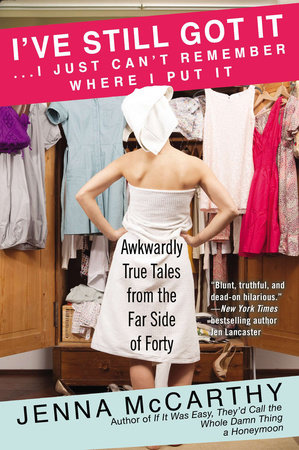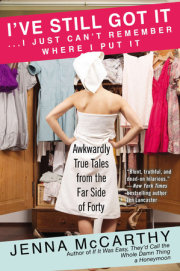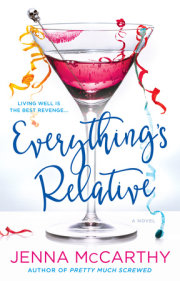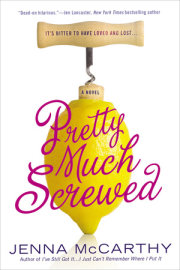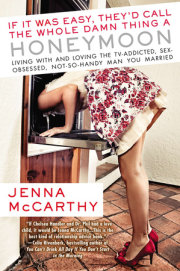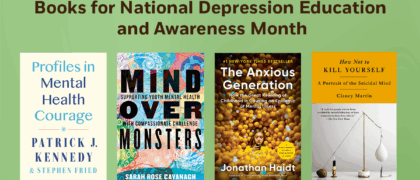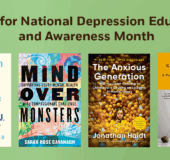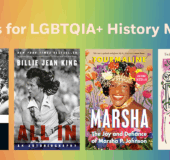INTRODUCTIONI was at dinner with a group of girlfriends when the conversation turned, as it frequently does these days, to cosmetic surgery. But not the kind you’re thinking about. No, we weren’t discussing brow lifts or butt implants or big, bouncy new boobs or even a little subtle liposculpting. The topic—and you might want to brace yourself for this one—was vaginal rejuvenation. And not in the “hey doc, while you’re down there working your episiotomy magic, maybe you could throw in an extra stitch or two, wink, wink” sense, either. That actually would be considered reconstructivesurgery, the mostly medically-necessary kind that’s designed to improve a body part’s particular function. Apparently there is something—a cosmetic procedure, an actual thing—that women are paying God knows how many thousands of dollars for so that their lady parts will look . . . prettier. And younger. And even, dare I say it? Fresher.
“But what . . . ? Why . . . ?” I was not contributing very effectively to the conversation. First of all, I was too embarrassed to admit that I hadn’t recently (or more accurately, ever) given my muffin anything resembling a thorough inspection, so I wasn’t even sure if it looked old and ugly. But more importantly, did it matter if it did? I guess to some gals, it most certainly did.
According to one practitioner’s website (because hell yeah, I Googled it), the cosmetic procedure in question—it’s called a labiaplasty, by the way—“changes the size or shape of the labia, typically making them smaller or correcting an asymmetry between them.” To be clear, I had absolutely no clue if my labia were oversized or lopsided, and I wasn’t about to start caring. All I could think when I read this was: Haven’t we raised the bar high enough already, people? Now our fucking vaginas have to look twenty-two forever, too? Where will it end?
I wondered about old women with youthful vaginas more than I should have. Were they porn stars or prostitutes or just lust-driven nymphomaniacs? Had some cruel lover given their beavers an unkind nickname that compelled these gals, in collective droves of despair, to long to be more beautiful . . . down there? Were they plastic surgery junkies who’d just about run out of body parts to perfect but then they caught a glimpse of their V-traps in a mirror and thought, Whoops, I almost forgot about that!? Because I’d have to be pretty damned pleased with every other inch of my body before it would even occur to me to mess with that particular part. “Let’s see, my neck doesn’t jiggle, my thighs are smooth and cellulite free, my rack is up around my neck . . . I’ll just get a little labia trim and then I’ll be good as new!”
I hadn’t even recovered from the vagina business when I found myself having a life-changing conversation with my sister Laurie. I was relating something my doctor had said that Laurie, as a health professional, found surprising.
“How old is he?” Laurie wanted to know.
“He’s young,” I told her. “You know, our age.”
Even though Laurie is an otherwise lovely person, she had the nerve to laugh at this.
“Jen, we are notyoung,” she said.
It was one thing to learn that my vagina might be getting a little long in the tooth; it was another to hear—from my older sister—that Iwas.
“Well, we’re not old,”I said, a thirteen on your one-to-ten defensiveness scale. Old is a relative term of course, but I think it’s safe to define it as “twenty or more years older than you are when being asked to define it.”
“No, we’re midlife,” my bitch of a sister informed me cavalierly. I am forty-five, and Laurie is forty-seven. Were we past our best-by dates already? And if we were, when had that happened?
“Mom’s midlife,” I contended.
“No, Mom’s old. We’re midlife,” Laurie insisted.
“Well, your vagina is older than mine,” I spat.
Was it hot in there or was it just me?
I did not like that word, midlife. For one thing, it sounded like midwife, which immediately conjured images of childbirth, a process I found more than a little traumatizing. Plus it sort of implied that I was halfway to the grave, which surely couldn’t be the case. The roadmap of lines on my face and my possibly withered vagina notwithstanding (I never did check*), I didn’t feel one bit different than I did when I was twenty-five and staying up all night dancing on bar stools. Well, maybe a tad less energetic. And probably a little more impatient. And I guess slightly more edgy. And definitely more confident. And a lot more squishy and “I don’t give a shit.” But other than those things, exactly the same.
The other issue I was having was that everyone knows midlife isn’t a noun; it’s an adjective—created to modify a single word: crisis. “Midlife crisis,” we whisper when we hear our friend Gina is having a fling with her gardener or Eve’s getting an eye lift. We’re half jealous (we want free hedge trims and perky eyes, too, damn it!), half relieved that we’re not the ones experiencing what some might consider the equivalent of a grown-up temper tantrum.
I was almost definitely positive that I wasn’t having any sort of crisis, but just to be sure, I Googled it. On the UK’s Daily Telegraphwebsite I found a handy list of “signs you’re having a midlife crisis,” and for the record, inspecting your vagina for signs of listlessness wasnot on the list. Here are a few items that were (note that some may be paraphrased because Brits love using fancy spelling for words likerealise that my spellcheck feature does not like):
- Wishing for a simpler life. [Stares at unread stack of Real Simple magazines in horror.]
- Looking up old flames on Facebook. Crap.
- Compulsively reminiscing about your childhood. But catching fireflies and riding a bike without a helmet, you guys! That shit was awesome.
- Obsessively comparing your appearance with your peers. Define “obsessively” please, Telegraph.
- Discovering your hangovers are worse and last longer than they used to. Not if you keep drinking!
- Revisiting vacation spots you went to as a child. But I already know how to get there!
- Googling medical symptoms. Do young people not do this???
- Tooling around town on a fancy new bike. Whew! Dodged a bullet there.
- Taking up a new hobby. Does searching online for plastic surgery before-and-after pictures count, do you suppose?
- Finding yourself easily distracted. Wait, what was I saying?
After I determined that at least by UK standards I had several of the symptoms of a classic midlife crisis, I proceeded to do something I generally try to avoid: I did some math. If I lived to be ninety, I would be squarely in the middle of my life. Even if I lived to ninety-five, I’d fall in the range. I’d pretty much have to reach a hundred and ten to even remotely be considered young by relative standards.
I’m not going to lie to you, my odds of living to a hundred and ten are slim. I grew up on a steady diet of Kraft macaroni and cheese and cream cheese and jelly on Wonder Bread sandwiches. When I wasn’t cramming my piehole with such healthy, gourmet delights, I was very busy secondhand chain-smoking four packs of unfiltered Kool cigarettes a day. I did this religiously for the first eighteen years of my life, indulging on airplanes, in the car, and right at the kitchen table. Sometimes during dinner. I partied my ass off before, during, and after college.* I consume far more Chardonnay and cheeseburgers than the Surgeon General recommends, and I can count on one hand how many “good night’s sleep” I get in a year. In other words, I’d be one lucky fucker if I were only halfway to the finish line here.
I probably don’t need to point out that midlife isn’t what it used to be, either. When my parents were my age, they were just kicking back and starting to enjoy the fruits of a lifetime of labor. They were empty nesters on the verge of retirement. They had fat bank accounts, their house was paid off, and their biggest annual stressor was deciding whether to take a beach vacation or a ski vacation or both. They owned a lake house and several boats, and had already put two kids through college. (Neither of them came from money, by the way, and Dad was a high school dropout. They just started young, busted their humps, and finished young.) My mom had a round tummy and droopy boobs and a furrow between her eyes but so did all of her friends, so none of them worried or even thought about these things much. Mom took ceramics classes and made homemade ice cream, and Dad spent long hours sanding the teak on his boats. They had free time pouring out of their ears. They may have been fulfilled or they may not have been, but they certainly weren’t buying books on the subject or attending happiness seminars or wondering if their junk was young and fetching enough. If they felt any angst about being in this halfway place, they drowned it in whiskey tonics and went blindly about the business of life.
Compare their forties to, say, mine. I’ve just secured a fabulous new thirty-year loan that I hope (but occasionally doubt) I will live to see paid off. Most days I work from five a.m. to eight p.m., taking breaks to shop for healthy, organic, locally sourced groceries that can be prepared in fifteen minutes or less, squeeze in the occasional workout, organize the overabundance of crap that never stops parading into my house, wash endless loads of laundry, enjoy an occasional shag, and shuffle my kids to volleyball games and gymnastics classes and tennis practice and hip-hop performances—all while managing to check my email and text messages approximately every thirteen seconds. I take crappy writing assignments I don’t want to so I can send my kids to summer camps—and not the chichi sleep-away kind, either; I’m talking regular old day camps. When my husband and I talk about retirement, it’s almost always in the context of a “what we’d do if we won the lottery” conversation and hardly ever rooted in anything resembling reality. I watch my peers getting chemical peels and hair extensions and lip injections and tummy tucks, and I silently beg them to just fucking stop so that the playing field might be a little more level. I stand in the mirror a lot and do this thing where I tug my facial skin up and out toward my temples, and I smirk at the unlined but clownish facsimile of my younger self staring back at me. I still wear very short skirts with very high heels, but I do this knowing that it’s not entirely appropriate. Fortunately, I don’t give a shit.
I guess getting older does have its benefits.
CHAPTER 1
You can tell a lot about a woman by peering into her medicine cabinet. Unlatch that door, and you’ll know immediately, for instance, if she is prone to cold sores or wears contact lenses or has trouble falling asleep. You’ll recognize right away if she occasionally gets gas, pops allergy pills, or battles athlete’s foot or yeast infections. And you can discern, with little uncertainty, just how desperate she is to stop the relentless march of time—the one that’s hell-bent on leaving muddy footprints across her face before beelining straight down to her ankles.
If a burglar broke into my house, he’d be a fool to ignore my medicine cabinet. There’s probably several hundred dollars’ worth of lotions and potions in there, and each and every one is emblazoned with the word ANTI-AGING or something synonymous. I’ve got products that promise to plump, refine, resurface, tighten, and tone; creams designed to minimize pores and dry up “adult acne” and fade age spots and, if all of those fail, hide the lot of them. The wrinkle fighters take up two deep shelves on their own. My shampoo and conditioner don’t just fight age, they defy it, people; even my toothpaste guarantees a younger-looking smile (which is totally awesome because I can’t think of anything hotter than a forty-five-year-old sporting braces).
Here’s the worst part: If you added up the money I’ve spent stockpiling my anti-aging arsenal over the years, you could probably buy a brand-new Range Rover with it. Which really pisses me off, seeing as I am here to tell you that shit did not work. I like to cling to the vague possibility that without it, I’d look even older and more haggard, but unless I find I have a separated-at-birth twin out there who hasn’t been indulging in these luxuries, it’s not like there’s any way to find out. Even with dutiful use of my overpriced haul, I have not-so-fine lines around my eyes, deep grooves on either side of my mouth, and a constellation of spots that may have something to do with my liver dotting the better part of my face.
This did not happen overnight. Although I worked hard on aging my skin all throughout adolescence and early adulthood (think: iodine-laced baby oil and monthly unlimited tanning bed memberships*), I’d say the visible decline started around thirty and has been steadily accelerating ever since. It’s one of those things you don’t really notice—like your kids getting taller or your house paint starting to fade and chip—until you stumble across a photo of what it used to look like. Every time I see a picture that was taken ten or seven or even two years ago, I have exactly the same thought: Wow, I look so young. This is when I do the skin-tugging thing—up and out until it’s taut across my face—and marvel at the difference several months and a few millimeters makes.
There was a time in my life when I didn’t think twice about having my picture taken. After all, pictures are just captured moments; what was there to think about? It turns out a lot—like lighting and shadows and angles,* to name a few. After a certain age, if all of those elements aren’t perfectly aligned in your favor, you wind up looking like Ebenezer Scrooge or Nick Nolte in every shot.
It never fails. I’ll get all decked out and done up and think I look pretty damned good, and then someone will whip out their iPhone and snap a picture, and I’m like, “Wow, who’s that old lady who jumped in front of me right as you were clicking the—OMG.” Is my mirror broken? Do I need stronger glasses? Why do I look like a bloated corpse? Delete, delete, delete. I delete a lot of pictures. I realize that there’s always Photoshop, but that’s a double-edged sword because if you go around posting all of these doctored shots all over Facebook, when people see you in person, they’re going wonder what the hell happened. It’s a lose-lose.
Recently my literary agent wondered casually if I had a different headshot I’d like to use on my books and in my marketing materials. “You don’t like the one I’m using?” I asked her, surprised. I loved that picture! What was wrong with her?
“Well, um, it’s just . . .” she stammered. “When was that picture taken?”
“I think it was 2005 or 2006,” I told her. “Why? Is that bad?”
“You might consider using a more recent one,” she suggested gently.
Well, why would I go and do a thing like that?I knew I’d never take another picture that good again, because I’d never look that good again. Oh right, the in-person letdown. I mentioned this conversation weepily to my husband.
“You’re still hot for your age,” he insisted, as if this was consolation. To me this response sounded like “I’d still do you,” which is fairly meaningless since I’m the only one he’s got clear and reliable access to for those purposes.
Still, I was almost inclined to believe him until a recent shopping trip to Bed Bath & Beyond. I wandered into the magnifying mirror aisle where I made the mistake of peering into one of these tools of the devil. The one I chose, purely by accident, had a ring of fluorescent lightbulbs all around it and a sticker boasting MAGNIFIES TWELVE TIMES right on the glass. In retrospect I should have known this would be a bad idea, after long-ago learning that the smaller I make my pictures, the better I look in them. (Postage-stamp size is ideal, but good luck finding frames.) But before I could stop to consider the wisdom of what I was doing, I pushed my nose toward the thing until my entire face came into overblown focus.
I have never been so horrified in my life. There were black rogue eyebrow hairs growing an inch outside of where any respectable brow hair should otherwise be, and the pores on my nose looked like dirty, cavernous sinkholes. There were eraser-size patches of dry, scaly skin everywhere and a subway map of tiny red veins around my nose. I had a fucking moustache—one that any fifteen-year-old boy would envy. How had I never noticed any of this before? I grabbed my youngest daughter, who was shopping with me, and thrust her perfect, dewy face in front of the glass. Magnified a dozen times it looked even more dewy and perfect, if that was at all possible. I suspect deep down I was hoping to find that the evil mirror had a handy knack for finding and highlighting flaws, but I realized in that moment that it simply made whoever peered into it more of what she already was. Which in my case was a middle-aged woman in serious need of attention.
Naturally, I bought it. I love/hate that thing. I spend far too much time staring into it, and it makes me pick at things I shouldn’t, but when I pluck my brows and do my makeup with that mirror and then turn the light off and flip the mirror to the unmagnified side, I’m usually pleasantly surprised by the results—compared to how I looked in floodlit, big-screen size, in any case. So at least there’s that.
Unfortunately, now that leaving the house barefaced no longer feels like a viable option, I get to enjoy this experience a lot. I sayunfortunately because I do not really like makeup. I can tolerate putting it on, but I hate taking it off, and with the exception of a brief blue eye shadow phase in the ’80s, I’ve never been much into experimenting with it. Plus I really prefer the natural look. Dolly Parton famously said, “It takes a lot of money to look this cheap.” I’d like to add that it takes an arsenal of makeup to look un-made-up if you’re over forty and also want to appear halfway presentable.
Because the rules change as we get older, like it or not. Do a quick Internet search for “makeup to look younger” if you don’t believe me. See those 178 million results? Exactly. You don’t want to actually click on any of the links, of course, because your head might explode when you see all of the “here’s how not to look like an old bat” articles alongside pictures of fourteen-year-old models.
To spare you that indignity, I’ll distill the drill for you here: First, you need a makeup primer. Without it, your foundation will slide right off of your no-longer-supple skin and into a puddle on the floor, leaving you naked faced and sobbing, which is only a good look for Kristen Bell when her boyfriend surprises her by bringing home a sloth.* Speaking of foundation, yes, you need it, and yours better have light-reflecting particles in it, because youthful skin naturally reflects light (think Keira Knightley), while old skin sucks it up like a thirsty ShamWow (think Glenn Close as Cruella de Vil or the old guy with the pitchfork in Grant Wood’s iconic American Gothic). Next, step away from the powder. I know you’re all gung ho about that mineral crap because you saw it on QVC and it’s supposed to be good for your skin and it has sunscreen right in it and you bought the fancy goat-hair brush to apply it with and everything—but after a certain point, powder is not your friend. Whereas a nice dusting of the stuff used to be a fine way to “set” your makeup, now it’s a no-no because a matte finish highlights wrinkles—as does powder blush—so you’re better off switching to a cream formula. (Which apparently you must applywith your fingers and above your cheekbones, not on or heaven forbid below them, so as not to draw attention to your sunken cheeks.) Give your babysitter or teenage niece your black eyeliner, and replace it with a softer brown model—the pros say its “much less jarring”—and never, ever put any shade of liner along your lower lashes, unless for some reason you’re trying to accentuate the titanic dark circles you’ve got under there. Oh, and that lip liner you love? Use it, and you might as well tack a strip of marquee lights under your nose to highlight your craggy kisser. Add some pale, plumping gloss to your lips—never anything dark or flat—and a few fake eyelashes (yours aren’t half what they used to be, sister), and you’re as close to ready to face the world as you’re going to get.
I mock this advice, but I also have to admit that I’ve tried it all. I bought a twenty-dollar egg-shaped makeup sponge because some famous makeup artist called it the “fountain of youth” in a magazine article. (It’s a sponge. Shaped like an egg.) I’ve stopped using powder, and I switched to lighter lips and bought a brown liner. I prime the shit out of my skin before doing all of this, and sometimes, if I’m going out somewhere really special, I wear fake eyelashes. (When you buy them somewhere like MAC or Sephora instead of the drugstore, they’ll put them on for you for free, which will save you a lot of cursing and also is a hell of a lot easier than curling your own anemic lashes and attempting to apply mascara, trust me.)
I was visiting my sixty-nine-year-old aunt Linda recently when I discovered the hands-down surefire way to being young and beautiful forever: Be Italian. Seriously, those damned Italians don’t age. Unfortunately, I’m sort of screwed here. Although both of my parents sported plenty of Pisano blood, their English-Irish genes clearly dominated in all of their kids. Which means we share the same relatively fair skin that’s prone to both sunburns and wrinkles. In other words, none of us is getting carded to buy booze anymore. Don’t get me wrong; we don’t quite resemble raisins yet. We just don’t look all that much younger than our full-blooded Italian aunt with her still-gorgeous olive complexion. So, if there’s any way you can be Italian when midlife hits, I highly recommend it.
“My Welcome-to-Midlife Moment Was . . .”
When I found a long gray hair growing out of my chin that appeared overnight.
—CLAIRE
There’s an old Charles Schwab commercial I love where a clearly jaded sales manager is telling his team to go out and sell some patently crappy stocks. After he mentions the courtside playoff tickets for the rep who manages to unload the most, he ends his pep talk with, “Let’s put some lipstick on this pig.” It’s a great visual and now something I think about a lot, especially when I happen to be putting on lipstick. I’ll study myself in the mirror afterward and think, Is this better now? Or was it better before? I think it was better before. In fact, after employing a dozen or more methodical application methods based on the aforementioned anti-aging makeup commandments, more often than not I’m positive this pig looked better without any lipstick at all.
The key seems to be to start with a better-looking pig. (And please know that I am not calling anyone but myself a pig in what’s become an admittedly fucked-up analogy here.) Barring plastic surgery—which I am not currently considering for a host of financial, emotional, practical, and irrational reasons I will detail later that include but are not limited to death and winding up looking like Carrot Top—I’m left with two alternatives: convince the rest of the planet to stop going under the knife so we can be wrinkly and splotchy and patently past our primes together (and let’s just face it right now that that’s never going to happen), or figure out what I can do now—on the sly, for very little money, and with no risk of death or my husband finding out—to look as young and perky as I possibly can. Fine, there’s a third option: I could just say screw itand stop wearing makeup or even making an effort, but I’m way too shallow for that, so we’re back to the two.
Since it’s cheap and I’ve never heard of anyone exfoliating themselves to death, I’ve started scrubbing my skin daily ever since the president of the American Academy of Dermatology said to me in a magazine interview, “I can tell the minute a patient walks into my office whether or not she exfoliates. The ones who do typically look ten years younger than their age.” Ten years,you guys. That’s your face-lift right there! So now I dutifully scour my face until it is bright red every single night. Sometimes my extra-super-gentle moisturizer stings when I put it on afterward, so I am pretty sure this means I’m doing a great job.
I’ve also tried to stop being sucked in by shiny magazine ads for fancy face creams with headlines like “Proven to Reduce Wrinkles up to 89%,” because like you I am smart, and I recognize that the “up to” in there means “anything less than,” which includes zero. Plus we all know that any product you can buy over-the-counter doesn’t do squat, because if it did, we would all look like Megan Fox. Think about it. So no more crap. I wash with $10-a-gallon Cetaphil and a rough washcloth, moisturize with coconut oil, and squirrel away the money I’m not spending on overpriced promises for the day they open that drive-through, painless, incision-free, super-affordable, no-downtime face-lift center.
(What the hell do you mean nobody is working on that yet? If you’re a scientist, would you kindly gather your smarty-pants friends together and get on that? The clock is ticking over here. The Mars rover can wait.)
A while ago I read that although side sleeping generally is recommended for postural alignment purposes, sleeping on your back is the secret if you want smoother skin.* In fact, the American Academy of Dermatology insists that people like me who enjoy lying belly down and smushing their faces into a pillow night after night will pay for it with permanent, lasting lines. (They liken the effects to what a shirt that’s been folded in the bottom of your dresser drawer for weeks or years looks like when you pull it out. Even after you wear it for several hours, if you don’t iron it, those folds never really smooth out.) But I’m a stomach sleeper, always have been. I try to assume the preferred pose; really, I do. And I usually can handle about thirty seconds of staring at the ceiling before I have to flip to my favored facedown position. Supposedly silk or satin pillowcases can help because they allow skin to slip right over the surface rather being forced into folds, but who wants to be sliding all over their bed all night? Plus I love my Egyptian cotton pillowcases, and also that shiny, silky shit is just a little too Hugh Hefner for me.
If you’re like me and refuse to drape your bed in porno film fabric, there’s an exhaustive menu of “minimally invasive” remedies that promise to help mitigate these pesky signs of aging. They’ve got lasers and peels and pulsed lights and sonic lifts and cell freezing and radiofrequency therapies and a battery of injectables you can squeeze into just about any groove or contour you’ve got. Most of these things can be done on your lunch hour, and you can go right back to work, and the biggest risk is that somebody might think you snuck in a quick power nap because you look so goddamned refreshed.
I’ve spent hours online marveling at the before-and-after photos promoting every nonsurgical anti-aging treatment there is, but the problem I have with them is twofold: The first issue I have is that they’re all temporary. I’ve endured the sensation of burning rubber bands smacking my face and lived for ten days looking like a leper to rid myself of some unattractive sun damage. I danced on my coffee table when the dark spots finally fell off and left a swath of pristine, unmarred skin in their wake. Then I wept hot, angry tears when those damned spots made a triumphant return just a few months later. I’ve injected a potentially deadly neurotoxin into my facial muscles and enjoyed seeing the skin above my brows turn as smooth as a river at dawn for three whole months before my face resumed its former ability to express emotion.* I still do it on occasion, but to have a year-round line-free forehead would cost more than a grand a year (and possibly my marriage; see below), so if you see me sporting particularly thick bangs, you’ll know why.
The second problem I have with these treatments is my husband. See, he is 110 percent against all of them. He thinks I’m “beautiful the way I am,” a statement I am inclined to believe because I’m the one who buys his reading glasses in ever-increasing strengths, so I am almost positive he can barely even see me anymore. And while I know he’s not the boss of me and I bring in my fair share of our family’s income, I long ago gladly turned over our collective financial management to him, which means he gets to put the kibosh on spending he deems unnecessary. He swears he’s anti-anti-aging simply because I don’t need it, but I know it’s because he’s super-conservative and thinks it’s far more important to pay our mortgage and put aside a few bucks for the kids’ college educations and to set it up so that we might not have to work until the day we drop dead at our desks than to have a hotter, younger-looking wife. So I’ve acquiesced. I’ve also made it patently clear that if we find ourselves on the receiving end of a financial windfall, he’s taking the kids to Disney Land on his own, because I’m checking into the nearest medispa for at least three weeks.
Until that day, I will keep doing what I’m doing, which is mostly exfoliating and waiting.
CHAPTER 2
After the getting-closer-to-death bit and having to learn all new makeup rules, the third worst part about aging is watching your body fall apart before your very eyes. (I figured we’d get the vanity crap over with early in this book, and then we can get to other fun stuff like figuring out how we’re going to pay for our funerals and the likelihood remote possibility that we all drink too much.) It seems like every single day I notice something—a bump, a mole, an extra chin, a three-inch hair growing out of my ear—that I am almost positive wasn’t there yesterday. Then I feel bad because I didn’t think to appreciate the thing’s not being there when I was lucky enough not to be saddled with it.
Seriously, I know we’re all enlightened these days and we’re supposed to love and embrace our imperfections, which I would be happy to do if it weren’t totally impossible. Did you read Nora Ephron’s swan song, I Feel Bad about My Neck?I did, as soon as it hit the shelves. With all due respect to the memory of the funniest woman ever to write a fake orgasm scene, when I read that title, I looked at my own reflection and thought, Really? Just your neck? What about your flabby arms? Your saggy, shapeless ass? Your spider veiny ankles? Your midsection that resembles a deflated balloon lying atop a pile of dead snakes? Your mushy, squishy muffin top? That area that you used to refer to as your décolletage that now looks like some sort of seagoing traffic map, with a cluster of creeks all flowing southward into one big river that dams up between your south-facing post-baby boobs? The back fat that spills over your bra strap, even if you’re at your lifetime-lowest weight? Good Lord, your feet?* (I don’t know about yours, but mine are a mess. Bunions, bone spurs, fallen arches, plantar fasciitis, tendonitis, cracked heels, hammer toes—you name it, I’ve got it. My feet might be the reason those particular body parts are referred to as “dogs.” In fact, my awesome and loving but also brutally honest uncle Jack insists I should not be allowed to wear flip-flops in public.) And that was eight years ago. If I had to pick a single body part to bemoan and then write a book about it today, we’d be here a long time.
Copyright © 2014 by Jenna Mccarthy. All rights reserved. No part of this excerpt may be reproduced or reprinted without permission in writing from the publisher.

